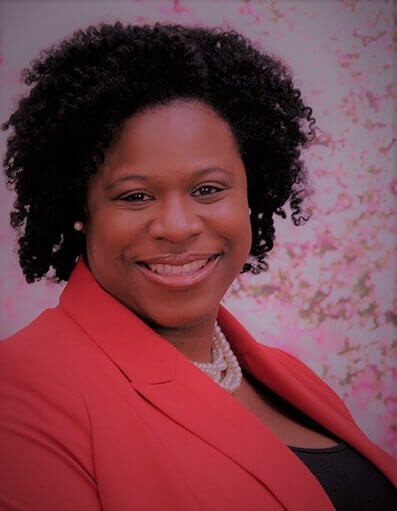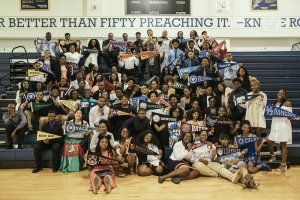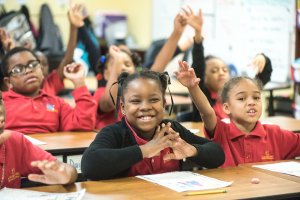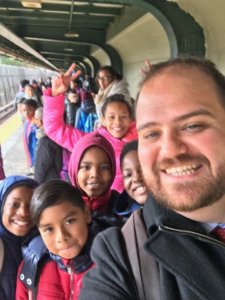CATEGORY: Teachers and Leaders
vermilion_af_admin • Jul 11, 2018
Why I Wrote a Workbook for Educators: 5 Questions With AF Principal Sarah Lewis
5-questions-with-af-principal-sarah-lewis
Amistad Academy Elementary Principal Sarah Lewis’s book, “The Educator's Workbook: Core Keys to Classroom Success,” was published last week. We sat down with her to learn more!
Tell us about your journey. Why did you go into education?
I have wanted to be an educator since I was seven, so I have not veered too much from what I really believe I was born to do. When I was in second grade, my teacher sat down with me and asked me to work with her on writing lesson plans for a study skills class for seventh graders. I did it, and I remember presenting to the class on one of the lessons. It’s a moment I look back on now. I just think about her belief in me and what that meant. She saw something in me that I believe was there along, but it was so powerful to have someone outside my family saying, “you can do this.”
Wow. How did you go on to become a principal at Achievement First?
I went on to study education in college—I got my bachelor’s and master’s degrees from Hampton University—and it’s funny, I knew I wanted to teach, but I said I never wanted to be a principal. I did say that I eventually wanted to spend my retirement educating educators, and I actually think that’s a big part of what I do now as a principal. I started at Achievement First as a learning specialist at AF Endeavor Elementary, and I’ve had many roles including dean of school culture, academic dean, principal-in-residence, and today I am principal of Amistad Academy Elementary in New Haven.
Why did you decide to write this workbook?
This book came about because I realized I struggled as a dean with helping teachers to do what I, at that point, was doing naturally—working with children who were seen as “challenging ones." I would try something with that student, and it would work, and I’d tell a teacher to do the same thing, and it wouldn’t work. There’s such a nuanced way to teach with a balanced approached that keeps the rigor high for children but also shows—sometimes in small ways—that you care about them. It’s a difficult thing to codify. I wrote the book to surface a couple of stories about the ways I feel like I’ve done that, along with five core keys to confidence and success in the classroom.
Can you share one of the stories from the book?
In the first chapter, there’s a story that begins with my laughing at myself for trying to dress as what I thought a teacher should look like. It was for a Christmas event, and I bought this gaudy sweater—the type of sweater you might wear to an “ugly sweater” party today. The children were looking at me like, “Why are you wearing that?” The lesson for me was that children can tell when you’re being your authentic self, and the book starts with that question, “who are you as an educator?” As we go through the five keys, and delve into developing excellence and rigor and all the practical tactics you can use, the heart of the book is really to help teachers with the warmth behind the rigor in the data-driven environment of education.
What do you hope people get out of reading your book?
The book is 100 pages, it’s an easy read, and I want it to be a tool for brand new teachers, for education majors, and for veteran teachers who want to reconnect with why they love this work. Most of all, I want folks to know that teaching is difficult, it is challenging, and we have so much time with children in the classroom—in a given day, more time than they’re spending with anyone else—and that’s a powerful gift that can be used or misused. We want to help children grow into who they want to be and be incredible at it. We need to keep the content level at a really high bar while also loving them through it. If we’re not doing that, we’re not doing everything we can do. So, this book is a charge and also a celebration.





